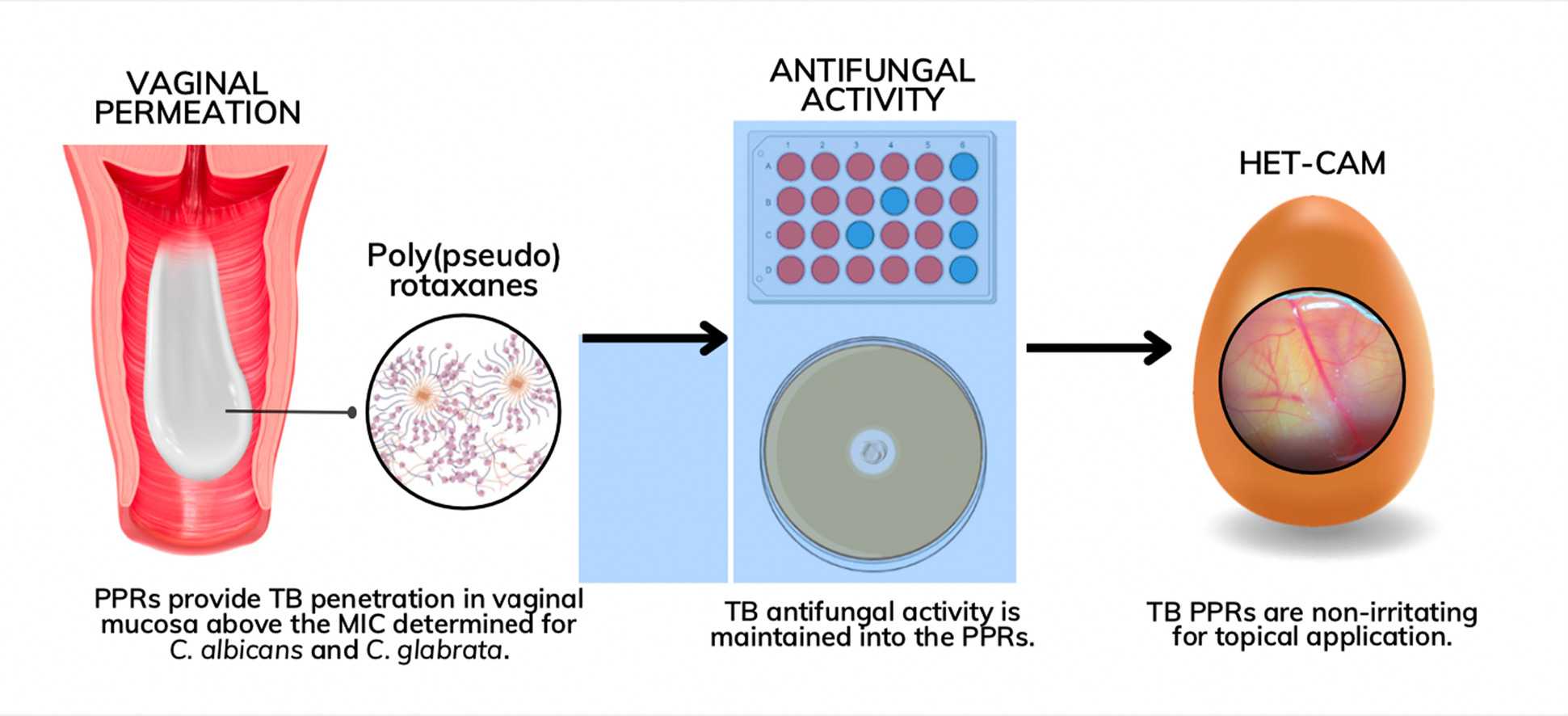α-Cyclodextrin-based poly(pseudo)rotaxane for antifungal drug delivery to the vaginal mucosa

This work aimed to evaluate poly(pseudo)rotaxanes (PPRs) potential for vaginal antifungal delivery. For this, PPRs containing terbinafine (TB) 2 % were obtained using two small surfactants, Kolliphor® RH40 and Gelucire® 48/16, and different α-cyclodextrin (α-CD) concentrations (5 and 10 %). PPRs were characterized by their physicochemical characteristics, irritation, and mucoadhesion capabilities. Formulations’ performance was assessed in a vertical penetration model, which uses ex vivo entire porcine vagina. Conventional penetration experiments with excised vaginal tissue were performed as a control. Results showed all formulations were non-irritant according to the HET-CAM test. Furthermore, PPRs with 10 % αCD showed superior mucoadhesion (p < 0.05).
Conventional horizontal penetration studies could not differentiate formulations (p > 0.05). However, PPRs with 10 % αCD presented a better performance in vertical ex vivo studies, achieving higher drug penetration into the vaginal mucosa (p < 0.05), which is probably related to the formulation’s prolonged residence time. In addition, the antifungal activity of the formulations was maintained against Candida albicans and C. glabrata cultures. More importantly, the formulation’s viscosity and drug delivery control had no negative impact on the antifungal activity. In conclusion, the best performance in a more realistic model evidenced the remarkable potential of PPRs for vaginal drug delivery.
Read more
Rayssa H.F. Costa, Anna Paula Krawczyk-Santos, Jayanaraian F. Martins Andrade, Geisa N. Barbalho, Rosane M. Almeida, Yanna K.M. Nóbrega, Marcilio Cunha-Filho, Guilherme M. Gelfuso, Stephânia F. Taveira, Tais Gratieri, α-Cyclodextrin-based poly(pseudo)rotaxane for antifungal drug delivery to the vaginal mucosa, Carbohydrate Polymers,
Volume 302, 2023, 120420, ISSN 0144-8617, https://doi.org/10.1016/j.carbpol.2022.120420.

